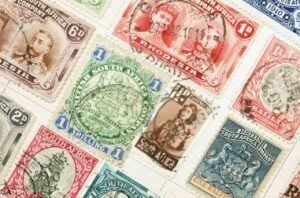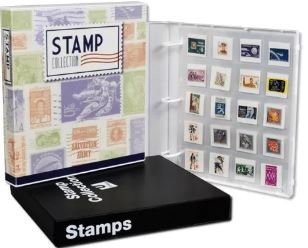Collecting Postage Due Stamps is a unique and intriguing branch of philately that focuses on stamps issued to indicate an underpaid or unpaid postal fee. Unlike regular postage stamps, these stamps served a functional purpose, ensuring that recipients paid the required postage when sending or receiving mail. With their historical significance and often fascinating designs, collecting postage due stamps offers a rare glimpse into postal history and the evolution of international mail systems. Whether you’re a seasoned collector or a newcomer, exploring collecting postage due stamps can add an interesting dimension to your collection, uncovering forgotten aspects of postal services from the past.
Collecting Postage Due Stamps is a captivating branch of philately that focuses on stamps issued to collect additional postage when a mailed item was underpaid. Unlike regular postage stamps, these stamps served a practical function, indicating that the recipient owed money for insufficient postage. As postal systems evolved, so did the use of postage due stamps, each with its own unique design and history. For philatelists, collecting postage due stamps offers a rare opportunity to explore the intricacies of postal history while uncovering forgotten aspects of mail delivery. Whether you’re a seasoned collector or just starting out, this niche area of collecting offers a fascinating window into the past.

The Origins of Collecting Postage Due Stamps
Collecting postage due stamps can trace its origins to the early days of modern postal systems. While the first adhesive postage stamp, the Penny Black, was issued in 1840 and revolutionized the postal system, the concept of postage due stamps emerged as a response to the need for ensuring that postage fees were properly paid. These stamps, issued when recipients owed additional postage, quickly became an essential part of postal history.
As collecting postage due stamps grew in popularity, collectors began to appreciate not only their practical use but also their artistic and historical value. Over time, as more countries issued postage due stamps, they became a fascinating way to explore the evolution of postal services and the stories behind each stamp.
The Growth of Collecting Postage Due Stamps
During the 19th century, collecting postage due stamps began to gain momentum as postal systems expanded globally. As countries developed their own postal services, the need for postage due stamps grew, creating a unique niche within philately. Societies dedicated to stamp collecting, such as the Royal Philatelic Society London (established in 1869), encouraged the growth of this specialized area of collecting. Stamp catalogs made it easier to identify and categorize stamps, including postage due stamps, which began to feature unique designs and symbols. Collectors found that collecting postage due stamps offered a distinctive way to learn about the global postal system and the various challenges involved in mail delivery.

In the world of philately, innovative stamp designs are at the heart of what makes stamps more than just a tool for postage—they become miniature works of art. These innovative stamp designs reflect not only the creativity of their designers but also the culture, history, and values of the nations they represent.
The 20th Century: A Global Phenomenon
By the 20th century, stamp collecting had become a global phenomenon. Advances in printing technology made stamps more varied and accessible. The rise of international mail, air travel, and communication meant that collectors could acquire stamps from far-off places. Rare stamps also became valuable investment items, with some fetching high prices at auctions.
The Digital Age and the Future of Stamp Collecting
The internet revolutionized the history of stamp collecting. Online auction sites and digital catalogs made it easier to buy, sell, and trade stamps. While digital stamps and virtual philately are on the rise, traditional stamp collecting remains popular. Today, collectors focus on themes like history, art, and culture, while new trends like digital stamps continue to shape the hobby.

Conclusion
The history of stamp collecting is a testament to the enduring appeal of stamps as both historical records and miniature works of art. From the Penny Black to modern digital stamps, the hobby has evolved but remains rooted in the joy of discovery. Whether you’re a beginner or an experienced collector, the history of stamp collecting offers endless opportunities to explore and learn.




